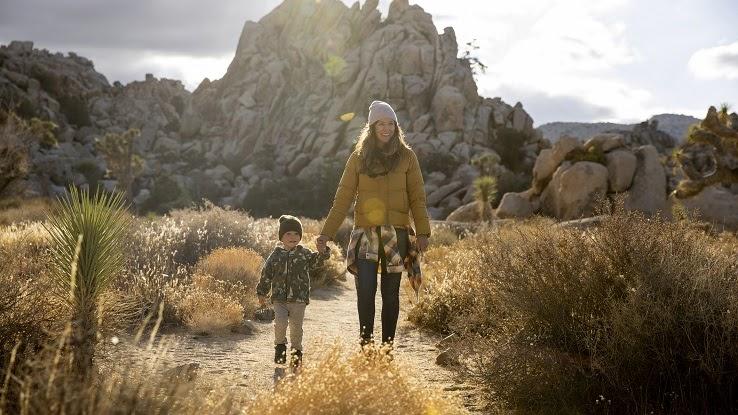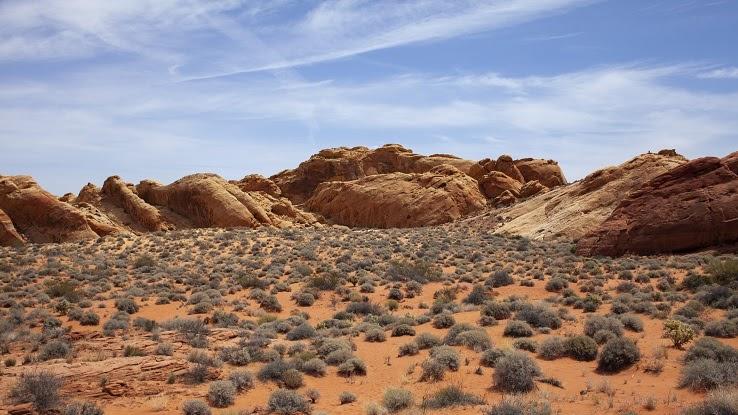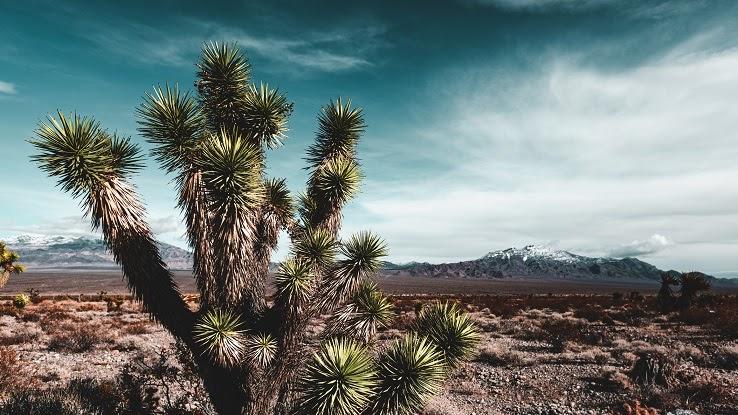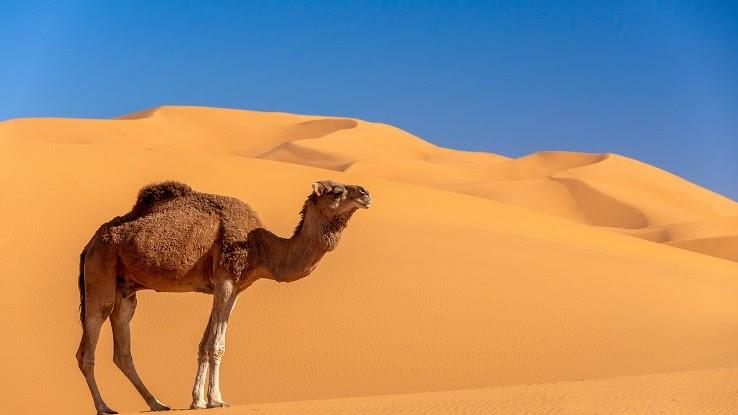Scared to Live on My Own Again

The desert is an ecosystem that's far more than diverse than almost people realize. Although cartoons make people recollect of tumbleweeds, cacti and roadrunners, deserts are full of enough of living and non-living things that brand this biome beautiful.
The way that many plants and animals survive in the harsh elements of a desert is nothing short of amazing. Even so, at that place is a long list of not-living things in the desert that brand this ecosystem unique and absolutely breathtaking.
Not-Living Factors: Facts About Abiotic Factors
Things that are non-living are abiotic, meaning they be physically but aren't biologically living. Things that are living are biotic. Abiotic factors in any ecosystem play a vital office in how the unabridged ecosystem functions. Is current of air a living matter? Is sand a living matter? The respond to both questions is "no," only these non-living things in the desert have a huge touch on on the way living things grow and thrive in this particular environs.

Abiotic factors encompass much of what makes each ecosystem unique. The sand that gives the desert a distinct look is an abiotic gene. The extreme heat that makes the desert perfect for common cold-blooded animals like rattlesnakes is also a non-living thing.
One abiotic factor that separates the desert from most other ecosystems is its relative lack of rainfall. Many of the animals in the desert accept evolved bodily functions that help them make the all-time out of a small amount of water. If those same biotic factors were present in a wetter ecosystem, such equally a rainforest, those living things that have adapted to the desert might non be able to handle the amount of h2o.
For example, chinchillas, which are native to a region close to the Atacama desert, evolved thick coats of fur that they keep clean using grit from the dry environs. Their coats are so thick that, if the animals get wet, the dumbo fur absorbs h2o and can crusade fungal infections.
A desert ecosystem consists of biotic (living) and abiotic (non-living) factors that support each other. Deserts are some of the driest climates on Earth. In addition to the arid deserts that about people are used to, there are also cold, coastal and semi-arid deserts.

Almost deserts get fewer than ii feet of rainfall in an entire year. The driest deserts only have about 10 inches of annual rainfall. That'due south nearly a human foot less than the average annual rainfall in about of the United states of america. In coastal deserts, more than wet comes from fog than pelting.
Listing of Not-Living Things in the Desert
Sand is the nigh common abiotic factor in a desert. Deserts can have every bit much sand as oceans take h2o. Although this unique type of soil doesn't provide the best home for about plants, it has a huge touch on the style animals in the desert live. The sand bears the farthermost temperatures of the desert. So, many walking animals in deserts have thick skin on the bottoms of their feet then they don't get burned traversing the hot sand. The stone hyrax is one case of a desert beast with thick paws.

When the current of air whips through the desert, sand can damage an animal's eyes. For protection against this, many desert animals, such as camels, evolved to have unusually long eyelashes. Sand also provides the perfect surface for some desert animals to move around on. Various snakes are able to slither easily through the loose sediment. Lizards, roadrunners and jackrabbits are also able to move quickly through the sand.
Sunlight is non a living thing, but it likewise has a very big impact on the fashion plants and animals in the desert live. In nigh other ecosystems, sunlight produces rut during the solar day. Vegetation, humidity and other abiotic factors aid to keep some of that heat in the atmosphere when the sun doesn't smooth at dark. Considering there'south little vegetation and even less water in the desert, this type of biome becomes very common cold when the dominicus goes down at dark. To survive in the desert, living things have to be equipped to handle both the heat of the twenty-four hours and the chilly temperatures at night. Many animals in the desert survive the heat considering they're fossorial, meaning they couch into the ground. When it gets besides hot, they dig holes to find condolement in the libation temperatures surreptitious.
The air current is a mutual abiotic factor in nearly types of deserts. The climate is too hot and dry to support a large amount of vegetation similar other ecosystems can. The little vegetation found in the desert is usually very short with roots close to the basis to soak upward as much groundwater every bit possible. Thus, whenever the current of air blows through the desert, in that location are very few natural elements to slow the speed of the wind. Current of air at high speeds creates the ferocious grit storms deserts are known for.
Rocks in the desert are straight impacted by two other abiotic factors: wind and sand. The wind sweeps the sand beyond rocks at high speeds, causing erosion. Almost of the rocks in the desert are either very smooth or contain sharp crags created by wind erosion. These unique types of rocks grade homes for many desert animals, such every bit the rock hyrax, which hides from the elements in the shady nooks and crannies of desert rocks.
For animals and plants, h2o is perhaps the about important non-living affair in the desert. Although deserts don't get much water from pelting, at that place are hugger-mugger reserves of water in most deserts, and some plants accept specialized roots to be able to access that water. Much of the h2o in deserts likewise arrives in the class of dew and fog. The animals and plants that live in deserts have specialized bodies that let them to alive with less water. For example, camels accept humps that store fatty and water, allowing the mammals to get for long stretches of time without having a drink.
These are just a few of the about of import abiotic factors in a desert, and there's a long list of abiotic factors that shape the beautiful desert ecosystem. These non-living things accept a large influence on the adaptations the plants and animals in the ecosystem take adult in order to survive.
Source: https://www.reference.com/science/non-living-things-found-desert-34f7553be5ad3147?utm_content=params%3Ao%3D740005%26ad%3DdirN%26qo%3DserpIndex
0 Response to "Scared to Live on My Own Again"
Post a Comment